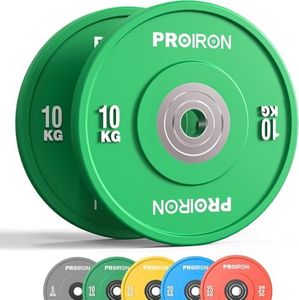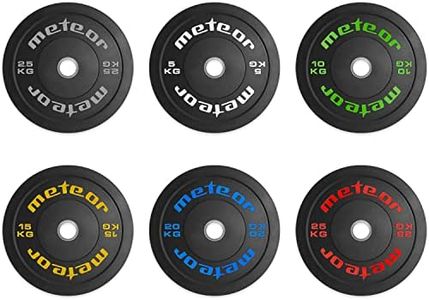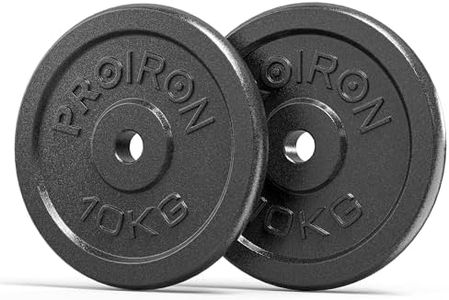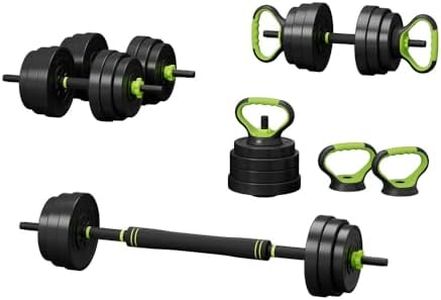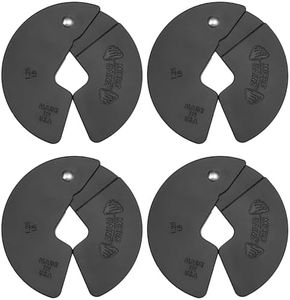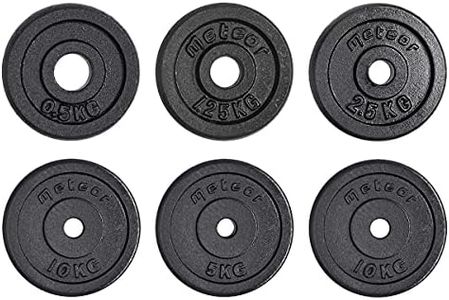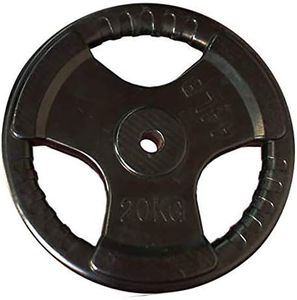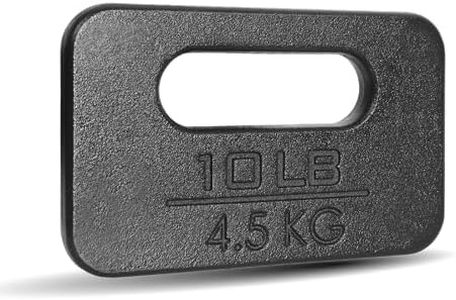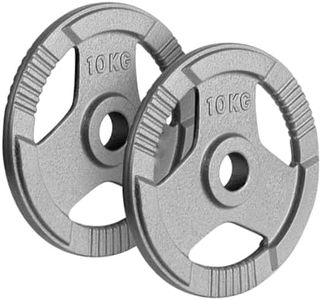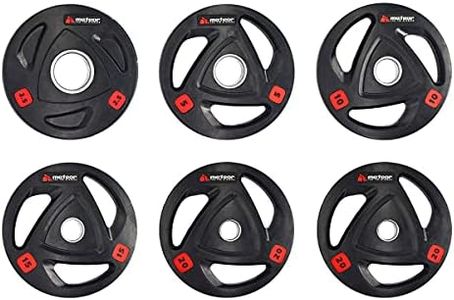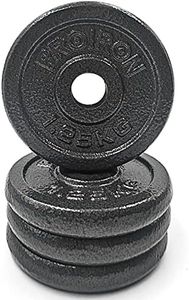We Use CookiesWe use cookies to enhance the security, performance,
functionality and for analytical and promotional activities. By continuing to browse this site you
are agreeing to our privacy policy
10 Best Weight Plates
From leading brands and best sellers available on the web.Buying Guide for the Best Weight Plates
When choosing weight plates, it's important to consider your current fitness level, your workout goals, and how you plan to use the plates. Weight plates come in different sizes, types, and materials, each with their own strengths and ideal uses. By understanding the key features, you'll be better equipped to select plates that suit your exercise style and help you achieve your desired results safely and efficiently.Plate Type (Standard vs. Olympic)Plate type refers to the size of the center hole and compatibility with bars. Standard plates have a smaller hole, usually about 1 inch in diameter, while Olympic plates feature a larger 2-inch hole, fitting Olympic bars. This aspect is important because using plates that match your bar ensures safety and stability during workouts. If you already own a bar or plan to buy one, check its size before picking plates. Olympic plates are used more commonly in gyms and are a better pick if you plan to perform heavier lifts or anticipate expanding your equipment in the future.
Weight IncrementsWeight increments refer to the different weights that the plates are available in, typically ranging from 1.25 kg or 2.5 lbs up to 25 kg or 45 lbs. Choosing the right increments is important to allow gradual progress and versatility in your workouts. Smaller increments are helpful for beginners or for exercises requiring precision, while larger plates are practical for those who lift heavy. Think about your current strength and your training routine, and select a set that provides a range of increments you'll actually use.
Material (Cast Iron, Rubber-coated, Urethane, etc.)The material of the weight plates impacts their durability, feel, and in some cases, safety. Cast iron plates are classic and durable, often used in home and commercial gyms. Rubber-coated plates add protection for floors and reduce noise, ideal for home environments or shared spaces. Urethane plates are even more resistant to impact and last longer, but may cost more. Consider your training location: If noise reduction or floor protection is a priority, look for rubber or urethane coatings. If you want a traditional feel and don't mind some clanging, cast iron works well.
Plate Shape (Round vs. Hexagonal/Bumper)Plates are available in different shapes, most commonly round, hexagonal, or bumper-style. Round plates roll easily, which can be good or bad depending on your workout preferences. Hexagonal plates do not roll, making them safer for deadlifts or if you want plates to stay put. Bumper plates are a specific type of round plate, typically wider and designed for Olympic lifting, allowing for safe dropping of weights. Your exercise routine should guide the choice: For Olympic-style lifts or if you drop weights, go for bumper plates. For classic strength training, the shape is less critical—choose based on safety and convenience.
Handle DesignSome plates include built-in handles or grip holes, making them easier to pick up, load onto bars, or use for exercises without a bar. This feature adds convenience and safety, especially if you'll be frequently changing plates or using them for functional exercises. If you're new to weight training or want flexibility, plates with handles may be the best choice.
Accuracy and Weight ToleranceWeight tolerance refers to how close the actual weight of the plate is to its listed weight. High accuracy (low tolerance, meaning less deviation) is more important for advanced lifters or those training for competition, where every kilogram or pound counts. For beginners or general fitness, minor discrepancies don't matter much. If precision is important to you, look for plates with a stated weight tolerance.
Finish and MaintenanceThe finish of weight plates, such as enamel, powder-coating, or chrome, affects how resistant they are to rust and wear. Some finishes require more maintenance, like occasional oiling to keep rust at bay, while others are more hands-off. If you plan to use your plates outside or in a humid environment, choose rust-resistant finishes. For dry, indoor use, this may be less critical.
